It stayed extremely quiet throughout the entire night. I was surprised! People started getting up very early though... and it became apparent they were probably mostly fishermen. It's a huge trout area (meant as both huge trout and hugely popular area).
When we first opened the door, we were hit with a powerful sulfur smell. Ah, yes, the beauty of geothermal areas! It was quite cloudy out, so we were glad we hadn't made the effort to get up to see the sunrise over the lake.
We got ready in the nearby bathroom building, packed up, checked out, and drove downtown for some breakfast. I had a large omelette with toast... which had enough butter on it to keep it from being too dry!
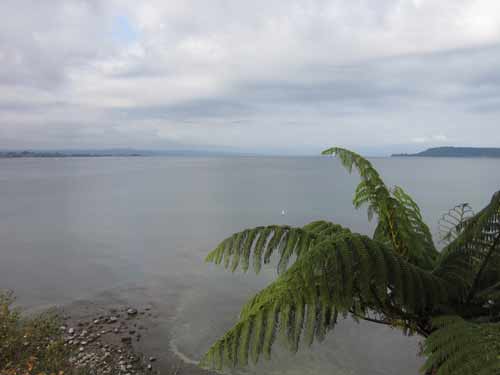
Lake Taupo under clouds
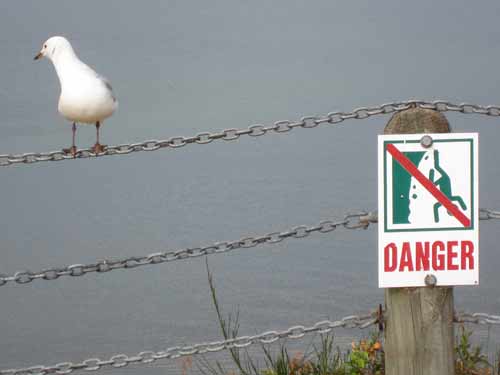
Really? Oh yeah, I guess that is kinda high up... I hadn't considered that before.
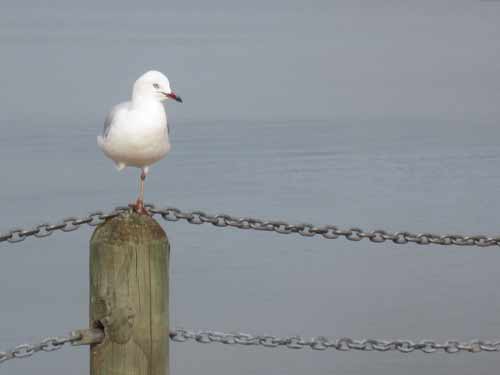
Ha! I scoff at your silly sign! I will stand here defiantly on just one leg!
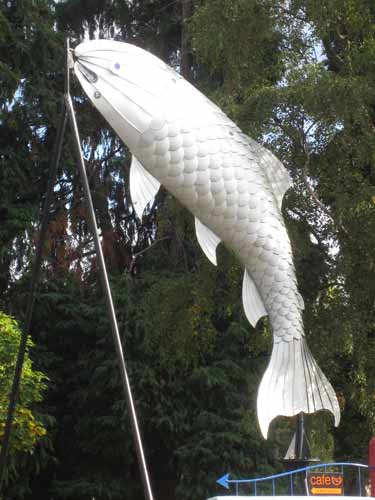
Fish statues...
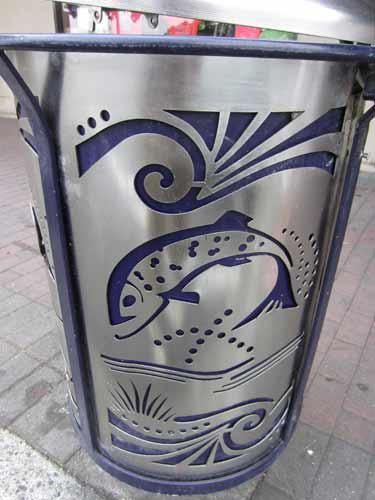
... fish trashcans... Ok, I guess it's a fishing place alright.

A large chessboard in the park
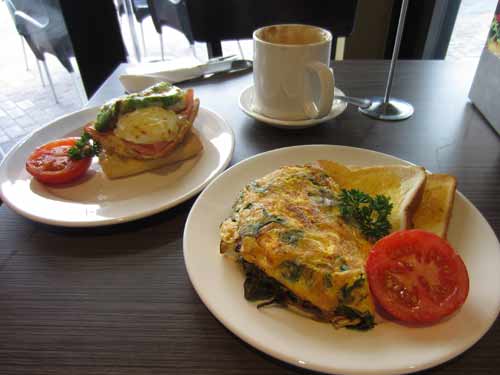
My breakfast with non-ultra-dry toast!
We then began a bit of site-seeing in the surrounding area. First stop... Huka Falls. This was a huge roaring channel of water that poured out into, well, yes, technically a falls, but barely. The thunderous sound of the raging water was impressive, as well as some of the spray that made its way up from the rapids.
This is part of the Waikato River, New Zealand's longest river, flowing from Lake Taupo to the sea south of Auckland, for a total of 264 miles. The river is channeled here by hard, geothermally-altered rock. As the river continues to slowly scour and erode this channel, the falls will gradually move upstream.
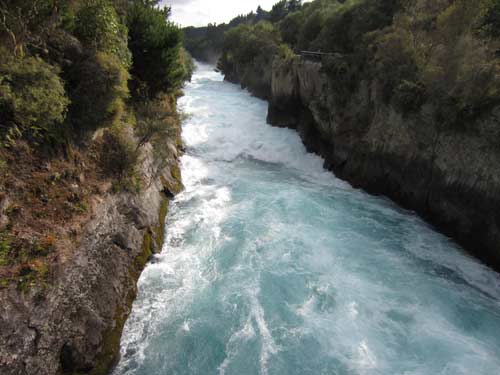
The channel looking down towards the falls
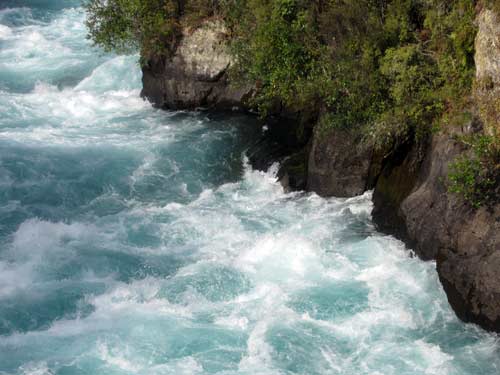
The churning water slowly wears away at the rock.
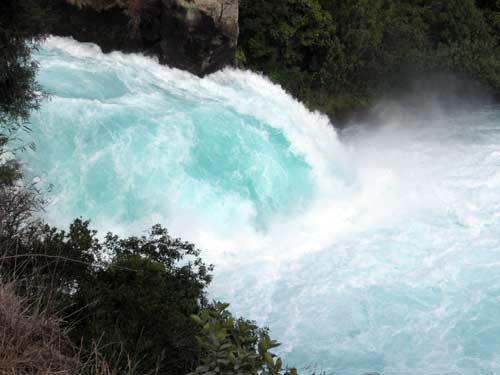
The incredible blue of the falls!

The Waikato River continues on its way.
We were then going to head off to do some honey tasting, but I read on the map something called "Craters of the Moon." Ooooh... sounds interesting! Regan had been in this area before but hadn't ever been impressed enough to try it. So he humored me and agreed to go. We paid a small fee and entered the gate... having no idea as to what we were about to see. We couldn't even find any brochures or postcards to give us a hint.
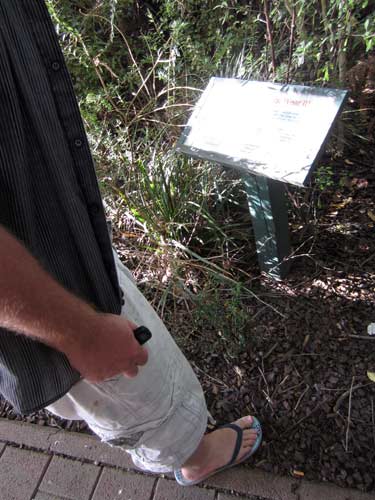
Reading the sign about "inappropriate footwear"...
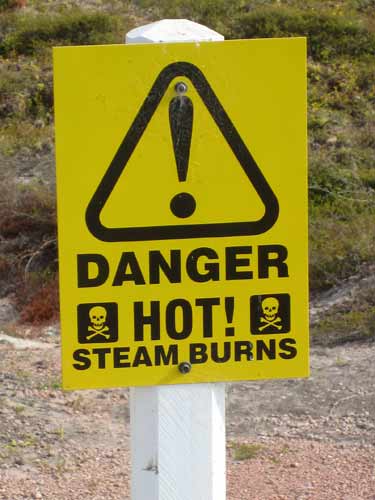
... for apparently good reason.
A sign informed us that the Craters of the Moon area is still very active and expanding as underground steam searches out new passages to the surface. Thermal activity is common in New Zealand because it lies on the edge of two colliding tectonic plates, the Pacific and the Indo-Australian. The deeper the Pacific Plate is pushed downward beneath the North Island, the hotter it gets.
So we walked among the highly vegetative landscape (um, not very moonlike) with a few steaming vent pockets. Not really that impressive, we had to say.
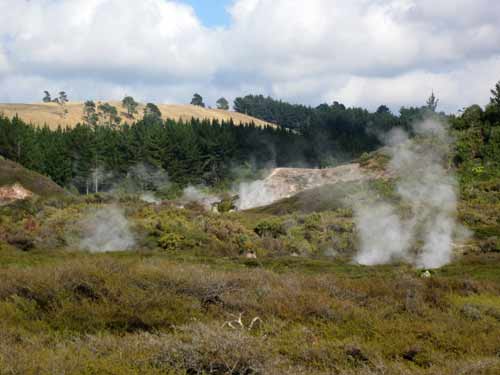
Ok, so a few steam vents.. nice, but the moon??

Click for a larger view of Regan's panoramic of the area
We took a bit of pleasure in dissing the place when suddenly... we walked up to our first "crater." Wow! We instantly took all our snippy little comments back. This WAS a crater on the moon! The thing was huge, steaming and quite impressive.
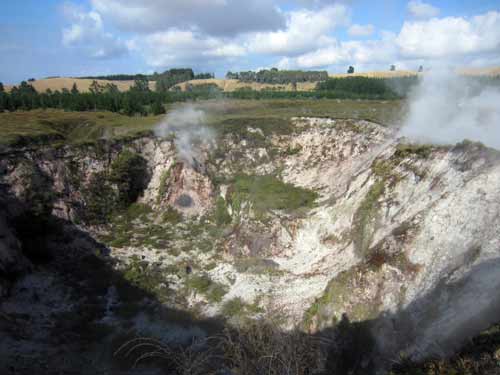
The giant crater
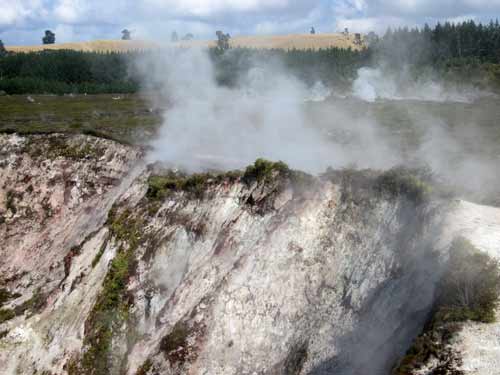
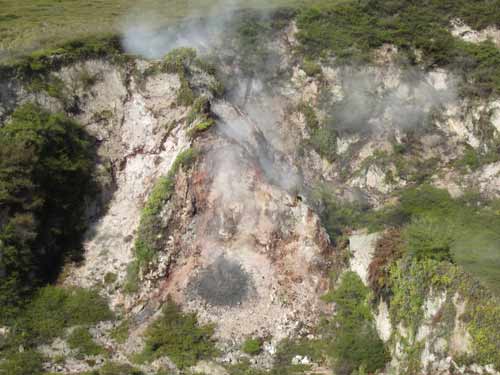
Ok, so the green detracts a bit from the "lunar" theme, but it was still a creative and mostly-appropriate name.
We continued to walk from crater to crater, each one being more impressive than the last.

"Maximum load 5 persons"... just a bit concerning
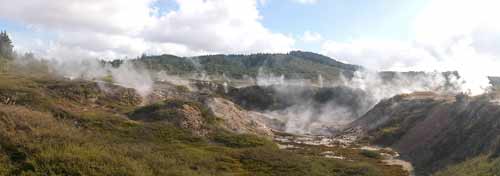
Another crater - click for a bigger view

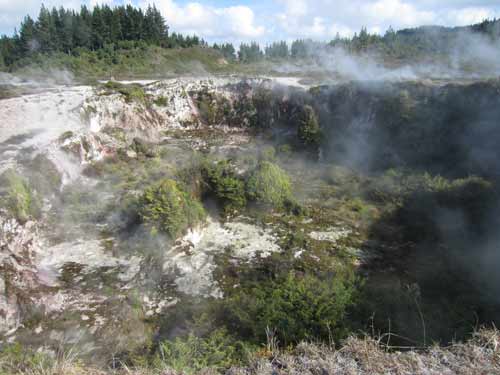

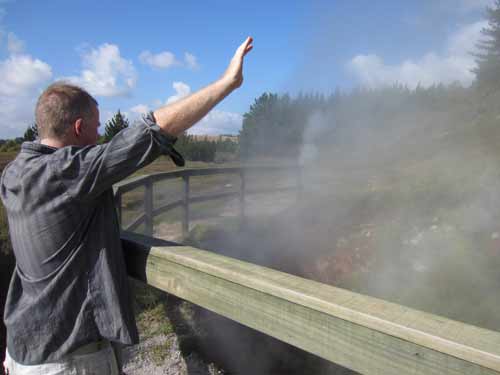
Basking in the hot, sulfury steam
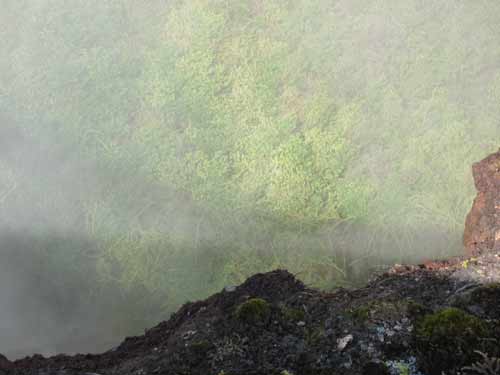
These hardy plants can grow in temperatures that would quickly scald you and me.

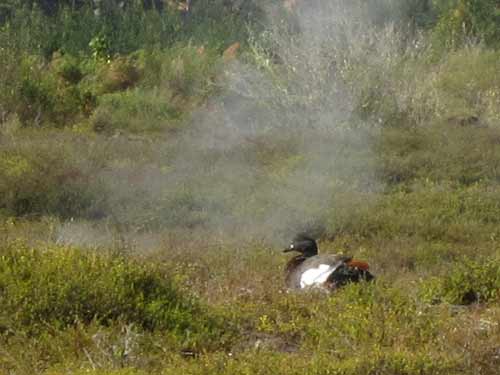
You can imagine the countles "cooked" jokes we made about this duck.
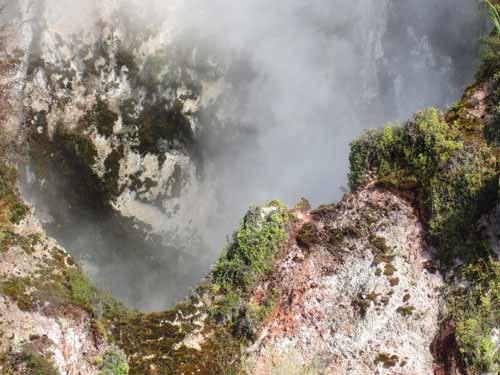
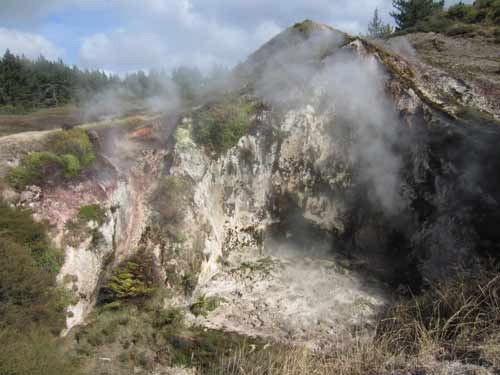
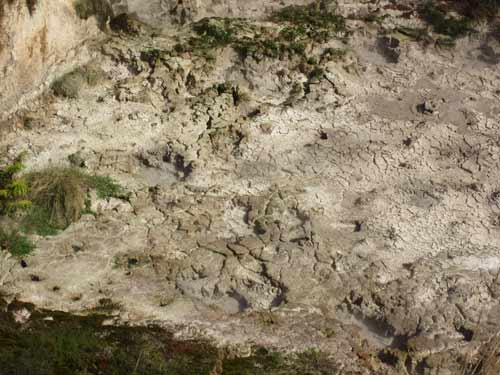
Under normal conditions, this probably would have been a bubbling, boiling mud pot. But the whole North Island has been experiencing an incredible drought.
It was then a steep hike up to the top of a hill to get a grand overview of the area.

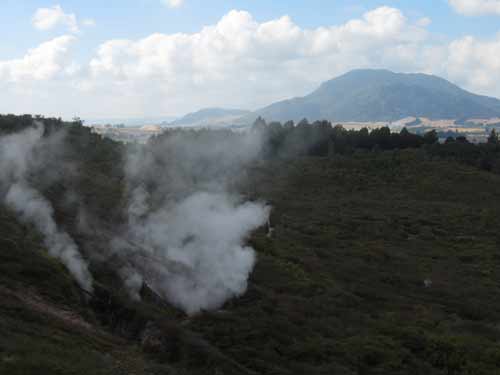
Mt. Tauhara
We swung by the Huka Honey Hive for a bit of honey and mead tasting. Everything was soooo delicious! The different flavors of honey are influenced by the different kinds of flowers the bees visit. So if someone wants manuka honey, they place their beehives around a lot of manuka trees. The lavender honey was wonderful! For mead tasting, there was manuka mead, clover mead and then heather mead which was mixed with brandy.
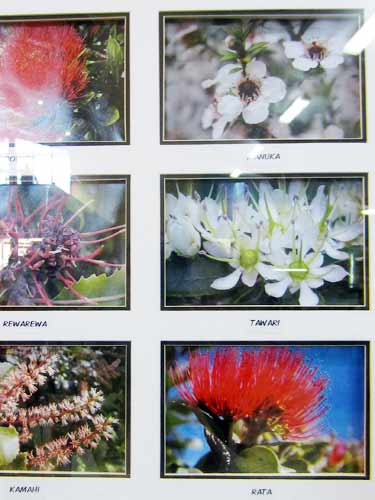
Different flowers lead to different flavored honey. Manuka honey is famous here, known for its medicial qualities.
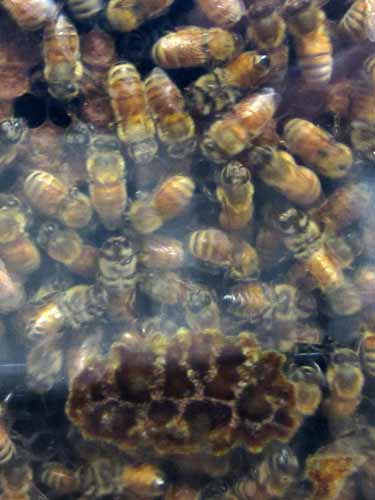
In the store was a "wall of bees." These little gals danced and jiggled and did all sorts of other beelike things. They could freely come and go to the outside.